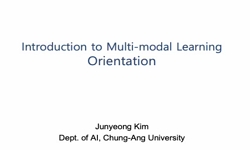Recipe generation is an important task in both research and real life. In this study, we explore several pretrained language models that generate recipes from a list of text-based ingredients. Our recipe-generation models use a standard self-attention...
http://chineseinput.net/에서 pinyin(병음)방식으로 중국어를 변환할 수 있습니다.
변환된 중국어를 복사하여 사용하시면 됩니다.
- 中文 을 입력하시려면 zhongwen을 입력하시고 space를누르시면됩니다.
- 北京 을 입력하시려면 beijing을 입력하시고 space를 누르시면 됩니다.
https://www.riss.kr/link?id=A109473749
-
저자
Khang Nhut Lam (Department of Information Technology, Can Tho University, Can Tho 94100, Vietnam) ; My-Khanh Thi Nguyen (Department of Information Technology, Can Tho University, Can Tho 94100, Vietnam) ; Huu Trong Nguyen (Department of Information Technology, Can Tho University, Can Tho 94100, Vietnam) ; Vi Trieu Huynh (Research and Application Development Department, FPT University, Can Tho 94100, Vietnam) ; Van Lam Le (Department of Information Technology, Can Tho University, Can Tho 94100, Vietnam) ; Jugal Kalita (Department of Computer Science, University of Colorado, Colorado Springs, CO 80918, USA)
- 발행기관
- 학술지명
- 권호사항
-
발행연도
2024
-
작성언어
English
- 주제어
-
등재정보
KCI등재,SCOPUS
-
자료형태
학술저널
- 발행기관 URL
-
수록면
288-295(8쪽)
- 제공처
-
0
상세조회 -
0
다운로드
부가정보
다국어 초록 (Multilingual Abstract)
Recipe generation is an important task in both research and real life. In this study, we explore several pretrained language models that generate recipes from a list of text-based ingredients. Our recipe-generation models use a standard self-attention mechanism in Transformer and integrate a re-attention mechanism in Vision Transformer. The models were trained using a common paradigm based on cross-entropy loss and the BRIO paradigm combining contrastive and cross-entropy losses to achieve the best performance faster and eliminate exposure bias. Specifically, we utilize a generation model to produce N recipe candidates from ingredients. These initial candidates are used to train a BRIO-based recipe-generation model to produce N new candidates, which are used for iteratively fine-tuning the model to enhance the recipe quality. We experimentally evaluated our models using the RecipeNLG and CookingVN-recipe datasets in English and Vietnamese, respectively. Our best model, which leverages BART with re-attention and is trained using BRIO, outperforms the existing models.
동일학술지(권/호) 다른 논문
-
- 한국정보통신학회
- Handoko Supeno
- 2024
- KCI등재,SCOPUS
-
Blockchain and IPFS-based IoT Massive Data-Management Model
- 한국정보통신학회
- Ting Chain
- 2024
- KCI등재,SCOPUS
-
- 한국정보통신학회
- Dongsup Jin
- 2024
- KCI등재,SCOPUS
-
Simple 1D CNN Model for Accurate Classification of Gait Patterns Using GRF Data
- 한국정보통신학회
- Ansary Shafew
- 2024
- KCI등재,SCOPUS






 DBpia
DBpia





